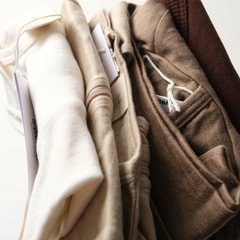
Raw Bamboo is an exceptionally sustainable material. Bamboo needs minimal water, pesticides and manual labour to cultivate. Bamboo grows rapidly, sometimes up to a meter per day, and can be harvested without replanting, making it an environmentally friendly and renewable resource.
Unfortunately, it is the manufacturing process where the major drawbacks of bamboo arise.
Bamboo rayon is widely used in intimates, bedding and baby clothing. To transform raw bamboo into a soft, wearable fabric, the bamboo is first broken down into a pulp using harsh chemicals like sodium hydroxide (caustic soda) and carbon disulphide. Dissolving the bamboo cellulose turns it into a viscous solution that can be extruded into fibres which are woven together to produce a silky-soft fabric.
The use of sodium hydroxide and carbon disulfide can have serious environmental repercussions. If not properly managed, these chemicals can contaminate water sources, harm wildlife, and pose risks to factory workers. Carbon disulfide, in particular, is a potent neurotoxin that can affect workers' health if proper safety measures are not in place. Moreover, the production process is energy-intensive and can result in substantial emissions of greenhouse gases, further contributing to environmental degradation.
Additionally, while some manufacturers have adopted closed-loop systems that recycle and manage these chemicals more responsibly, this practice is not yet widespread. As a result, many bamboo rayon products on the market may still be linked to unsustainable and harmful manufacturing practices.
In conclusion, while raw bamboo as a material holds significant promise for sustainable agriculture, the chemical-heavy process required to turn it into bamboo rayon fabric undermines many of these benefits. Consumers looking for eco-friendly fabrics should be aware of these drawbacks and consider seeking out bamboo products that are produced using more sustainable methods, or opt for other eco-friendly fabrics like organic cotton or linen.



